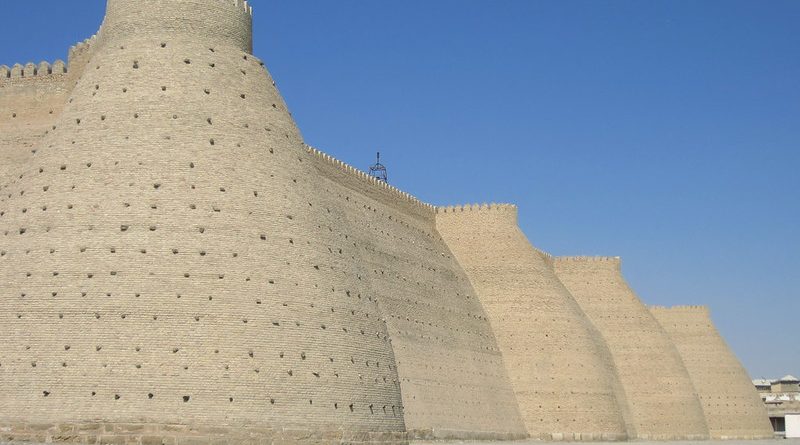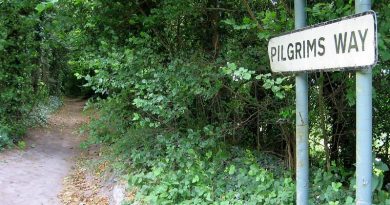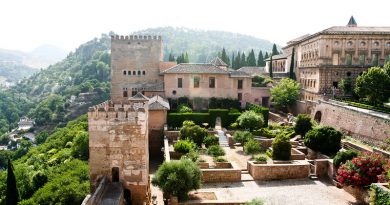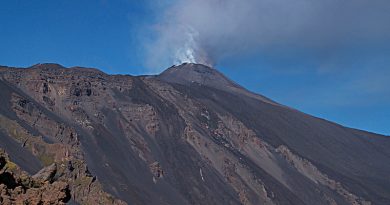Uzbekistan Destinations
Travel Warning:
Some parts of Central Asia can be unstable: check current government advice before travel. Ongoing military operations in the region mean Western tourists can be the target of terrorism.
Uzbekistan background
Uzbekistan lies to the north of Afghanistan, sharing borders with Kazakhstan, Kyrgyzstan, Tajikistan, and Turkmenistan. Covered mainly by arid desert, the country experiences long, hot continental summers and mild winters.
Russia conquered this remote region in the late nineteenth century, setting up the Soviet Republic in 1924. Uzbekistan gained its independence in 1991, and this is celebrated annually every 1st September with fireworks, feasting, and plenty of long-winded toasting, as is traditional with native Uzbeks.
The capital Tashkent serves as an international travel hub, connecting many cities in Central Asia. With a majority Sunni Muslim population, traditional Islamic majdrassas and mosques feature in many of the towns and cities.
The traditional architecture in Uzbekistan is a big draw for visitors. It incorporates spectacularPersian and Mogul influences and is built with exotic and ornate tiles. These artistic wonders can be attributed to the tyrannical Timer the Lame (Tamerlane) who ruled the Central Asian empires in the fourteenth century and spread fear and violence. His legacy, however, was to erect some of the most beautiful structures in the world.
Uzbekistan holds all the delights and mystery of the ancient Silk Road, where you can lose yourself in an Arabian fantasy in the many bazaars and teahouses. The shopping is second to none: you can dig out some fantastic bargains of old silks, porcelain, wooden furniture, jewellery, and carpets.
Uzbekistan locations
Khiva
The smallest of the oasis towns in Uzbekistan, Khiva sits in the middle of the Kara Kum Desert. The city itself grew up around a small well which is said to have been discovered by Shem, son of Noah, and has since expanded into the surrounding desert. You will find the old inner town, with its mud streets and squares, perfectly preserved.
Khiva is a treat for those searching for some of the old Silk Road mystery and charm, in its remoteness and preservation. It is possible to tour the compact city on foot, and evening strolls around the quiet streets are well recommended.
Starting your tour at the western gate, you approach Kalta Minor, a colourful minaret, less than half complete. Next door is the Muhammad Amin Khan Madrasa, once the largest theological college in the city housing up to 250 students. Today it stands as a hotel in a beautifully decorated courtyard. Opposite sits the Kunya Ark, the old city’s citadel, the highlights of a tour here are the summer mosque and throne room. You can climb to the rooftop to enjoy spectacular views of the Ark and the old city. Further along the main east-west street you’ll findJummi Mosque, the interior decorated with carved wood columns. Tash Hauli Palace is slightly further to the north-east. As you enter through the private quarters, you’ll find the harem ornately decorated with blue glazed tiles and beautiful carved wood. This incredible space should not be missed: ensure you take in the throne and music rooms on your tour.
If your stay is limited, one sight you should definitely see is the Islam Hodja Madrasa and Minaret and the Pakhlavan Mahmoud Mausoleum. Its beautiful blue and white interior should not be missed. Stroll along the streets behind to access many more madrasah and walk along the ramparts of the city walls towards the Ark.
For those who fancy a bit of bargaining, the Allah Kuli Caravanserai and Tim house lots of shops and stalls. Just outside the eastern wall of the city, you’ll find vendors displaying their wares throughout the streets of the main market.
Two days is recommended for a stay in Khiva as the evenings are great for soaking up the laidback atmosphere of one of Central Asia’s most beautiful cities. Flights are available to nearby Urgench, about 25 miles to the north, and then transfer to Khiva with one of the many drivers waiting at the airport.
Bukhara
Located in the south-west of Uzbekistan about 180 miles from Samarkand, Bukhara has been dubbed the ‘Star of the Muslim World,’ due to its status as the holiest city in Central Asia. With 360 mosques and 80 masdrassahs, it is said the sun shines upwards from Bukhara, whereas all other cities the sun shines down on. Completely surrounded by the vast Kyzyl Kum Desert,Bukhara manages to maintain its traditional atmosphere. In its Silk Road prime, it developed renowned schools of art and learning, famous throughout the Islamic world. You’ll find some of Central Asia’s most intriguing landmarks and architectural wonders in Bukhara’s narrow winding streets which reveal surprises at unexpected turns including The Ark, a vast 100,000 square feet ‘city within a city’ palace, the giant 150 feet tall Kalyan Minaret and its 10,000 capacity mosque with burnt brick design, and Lyab-i-Haus, the town’s sacred pool and social epicentre.
Tashkent
Uzbekistan’s capital is the fourth largest city in the former USSR. Transport connections here are excellent; you can catch international flights to many destinations. The original town was flattened by the 1966 earthquake and in place of the ancient Uzbek architecture there now stands some rather drab Soviet-style structures. The city itself retains probably more Soviet influence than others in Central Asia, and as such has a large ethnic Russian population. Here you’ll find entertainment such as theatres, bars, and restaurants. For something a bit more authentic, head along to concert hall and catch a traditional Uzbek show with dancing and music.
Tashkent has a few mosques, madrassas, and mausoleums, however, it is a much better place to experience the contemporary side to Uzbek life with its tree-lined boulevards, pretty parks, and lively pedestrian areas. The metro aids getting around this sprawling city, and a good start to your tour is the square of Amir Timur Maydoni with its statue of Tamerlane. Referred to locally as The Broadway, Sayilgoh Street is a lively spot and the Navoi Opera and Ballet Theatre are nearby.
Mustaqillik Maydoni (Independence Square) is a large, empty space, often used for parades and rallies, where you can find a large globe with Uzbekistan highlighted. Various government buildings are located here including the president’s office. To the north of the square lies theTomb of the Unknown Soldier, the Turkestan Concert Hall, and the Earthquake Memorial.
Take the metro to Bodomzor Station and you’ll find the UzExpo Center, an amusement and water park. Get to the viewing platform in the TV tower for some good views over this interesting city. There’s a circus near to Chorsa Metro Station in a domed building with fountains.
For an idea of what this ancient city was like before the earthquake flattened most of it and the Russians rebuilt in their own Soviet style, head to the old town to the west. The daily Chorsa Bazaar still seethes with activity as vendors fill the blue-domed hall, selling everything and anything. The main religious buildings are close by including the Barak Khan Madrassa and theTellya Sheikh Mosque on Khast Imam Square and the Kukeldash Madrassa and Jummi Mosque to the east of the bazaar.
If you fancy a museum, the Fine Arts Museum houses an interesting collection of artefacts, paintings, and suzani (Persian needlework wall hangings). Others include the Museum of Decorative and Applied Arts, the Timur Museum and the History Museum of the People of Uzbekistan.
Outside of Tashkent
With Tashkent as your base, you can take trips to the Chatkal Mountains in the north and east. The town of Chimgan has some interesting activities and the nature reserve of Ugam-Chatkalis possible to visit from here. Dzizhak to the south has a nice hilltop restaurant and is the site of Tamerlane’s Gate.
Samarkand
The mythical and evocative oasis of the ancient Silk Road, Samarkand draws visitors with its promise of magic and intrigue. This town has plenty of Arabian lore to draw you into its history and is famous as the home of Timur the Great. His cruel legacy has left Samarkand with some of Central Asia’s most magnificent mosques and palaces.
The Registan and the ruins of the Bibi-Khanym Mosque are particularly worth visiting. The Registan is the most famous landmark in Central Asia and its courtyard is surrounded by three madrassas covered in bright, geometric patterned tiles. The Ulug Bek madrassa is the oldest surviving college in Central Asia, completed in 1420 by the famous astronomer Ulug Bek, who was also the grandson of Tamerlane.
The Bibi-Khanym Mosque, to the northeast of the Registan, is reached by walking down the pedestrianised Tashkent Kuchasi. It is the largest mosque in Central Asia, covering an area larger than a football field. Despite the restoration that is currently being undertaken, the building does not fail to impress. Further on you can find Shah-i-Zinda, a hill-side necropolis (ancient cemetery) hosting some of the most beautiful and intricate artistic detail in Uzbekistan. The mausoleums are covered in carved and glazed turquoise and aquamarine tiles, laid in beautiful, geometric and floral patterns. Outside you can sit and watch the world go by or shop for fruits, vegetables and tea sets.
About fifteen minutes walk southwest of the Registan is the Gur Emir, Tamerlane’s mausoleum with a melon-shaped dome in turquoise blue. Head down to the Culture and Art Museum for good displays of decorative art, including carpets and embroidered wall hangings called suzanis.
Outside the city, the village of Urghut, high in the mountains, makes a nice excursion. It is the trading centre of the prosperous agricultural region where you will find a good market.
Shakhrisabz
Tamerlane’s stupendous summer palace lies just south of Samarkand in Shakhrisabz. You can take a taxi or bus two hours from Samarkand and view what is left of Ak-Saray Palace, and the Dorussiadat seat of government. The journey to the town crosses some beautiful views across the mountains. There is not much left of Ak-Saray, but you can see from the remains the scale of this extravagant palace. The entrance to the palace still stands: two towers that were originally joined by an arch. Climb to the top of a tower for a good view across the site and the nearby mountains. Other sites worth visiting include the Dorut Tilovat Madrassa with its blue-domed Kok Gumbaz Mosque, and the Dorus Siadat Mausoleum, the resting place for several of Tamerlane’s sons.
Karakalpakstan
The area south of the Aral Sea is officially called the Republic of Karakalpakstan. It is an autonomous republic within Uzbekistan, inhabited by Karakalpaks, Uzbeks, and Kazakhs with smaller minorities of Turkmen and Russians. There is a valley and the Delta of Amu Darya in the centre and Kyzylkum Desert occupies the east of the region. The agricultural economy dominates, with crops including alfalfa, rice, and corn. The Amu Darya’s waters are channelled down to the cotton plantations which provide the region with much of its income through exports. The irrigation of the land with water from the Aral Sea has led to a massive reduction of the sea level. This has effectively reduced the republic’s fishing industry, changed the climate and reduced rainfall, making the growing season increasingly short.
Andijan
Situated in the Syr Darya in Ferghana Valley, this former trading centre on the old Silk Road is the main city in this populous area of Uzbekistan. There’s not much to see in Andijan except the bazaar and the remains of the fortress, but it’s not worth a special trip. The Ferghana Valley region is notoriously unstable so ensure you get up-to-date travel advice before planning a trip here.
Ferghana
The town of Ferghana is a good base to explore the surrounding Ferghana Valley and has a couple of decent hotels. This imperial town has a distinctly Russian feel as it was founded in 1877 as a Russian community. Stop here to see some interesting nineteenth and twentieth century architecture.
Kokand
Set in the fertile region of the Ferghana Valley, this city lies within the oases, blending the influences of its Islamic, Chinese, and Russian neighbours. The premier feature of Kokand is the impressive, lavish 113 bedroom palace of Khudayar Khan, which has been restored to its former glory. Other sites of interest include mosques and madrassas from its history as an important spiritual centre. Chaikhanas (teahouses) are also popular in Kokand, where you’ll find many robed Uzbek men watching the world go by and drinking tea. As with the rest of the Ferghana Valley region, check current travel advice before planning a trip here.
Maghilan
An older and more traditional town, Maghilan is home to Uzbekistan’s largest silk factory. Tours are available, and time should be scheduled in to visit the bazaar.
By Jenna Colbourne




